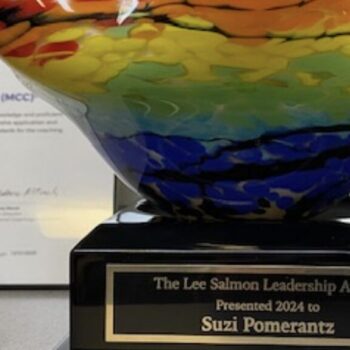
Reframing as an Essential Coaching Strategy and Tool
In the case of both meta-language and “learning how to learn”, two levels of activity seem to be taking place simultaneously. On the one level, people are using language and are learning how to perform certain tasks. On the second level, they are talking about language and learning about how they learn to perform certain tasks. Similarly, there are two levels at which change seems to be taking place. At one level, the function of any planned change effort can be conceived as the acceleration (facilitation) of a desired transition or deceleration (blocking) of an undesirable transition that has already begun in an organization.
First order thinking and resulting first-order change effort, for example, might involve increasing the efficiency of an accounting system that is already in place or extending the length of a training workshop from three to four days. This first order perspective requires only that a person or organization do more or less of something than now is the case. It often requires that we apply readily available habits of thought—what Daniel Kahneman (2013) identified as the “heuristics” involved in the process of “fast thinking.”
The success resulting from this way of thinking and the change that is being made can usually be measured in quantitative terms. The change and resulting outcomes are rather easily observed and understood. First-order thinking and change occur frequently in the life of individuals and organizations. We find that personal habits and collective routines reign supreme in daily. Often it is hardly even noticed if the way of thinking in routinized and the quantity of change is minimal.
At a second level, thinking is “slowed down.” Assumptions are challenged. Collaborative dialogue is encouraged among people offering diverse perspectives (Page, 2010; Bergquist, 2013). Planned second-order change can be conceived as the transformation of some structure, process or attitude in the organization. A transformation process involves a qualitative shift. Something is altered in form, such that the old ways of measuring it is no longer valid. An organization, for instance, installs a new accounting system rather than seeking to improve the current system. The training program is abandoned, in favor of social-technical systems consultation (Taylor and Felten, 1993), rather than being lengthened.
Second-order thinking and change is always abrupt and noticeable. It may arise from a series of smaller, first-order thoughts and changes that eventually require new ways of thinking and/or a second-order change: “the straw that broke the camel’s back.” To keep with the straw metaphor, one piece of straw which is placed on the ground becomes two pieces of straw when a second piece is set down beside it. At some point, when a certain number of pieces of straw are laid on top of one another, we no longer have pieces of straw, but rather a haystack. The haystack is a single, coherent whole — a system of sorts — that can be identified by a single word. A qualitative, second-order change has taken place, based on several, incremental first-order changes. Similarly, a child at some point becomes an adult, a group of people become an organization–a set of minor irritations become a problem.
- Posted by William Bergquist
- On May 10, 2024
- 0 Comment


Leave Reply